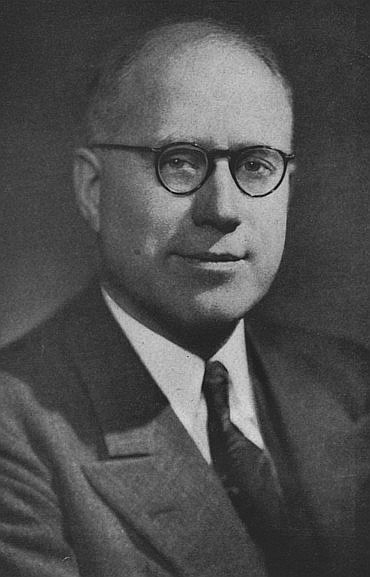| Profile | Major Works | Resources |
Alvin H. Hansen, 1887-1975.

![]()
American economist at Harvard, that began as an American Institutionalist but converted into one of the leading proponents of Keynesianism in the United States.
Alvin Harvey Hansen was born in Viborg, South Dakota, the son of Danish immigrants. Hansen got his undergraduate studies from Yankton and went on to pursue his graduate studies at the Institutionalist citadel of University of Wisconsin, studying under Ely and Commons. He received in Ph.D in 1918, with a thesis on business cycles. After a stint as an instructor at Brown, Hansen joined the faculty of the University of Minnesota in 1919.
Alvin Hansen became a professor at Harvard in 1937. Hansen famous "secular stagnation" thesis came out the next year, in his presidential address to the AEA, with the harrowing vision of an economy trapped permanently in a slump of low population growth and low investment.. At first suspicious of Keynes's General Theory when it first came out, Hansen soon converted c.1938 and became its chief champion. His 1941 treatise re-articulated American business cycle history in terms of Keynesian theory.
Although never quite in a formal position as a top government advisor, Hansen had an enormous indirect impact on US government macroeconomic policy. Hansen served on several government advisory posts, e.g. research director at the Committee on Policy in International Relations (1933-34), advisor to the Committee on Social Security (1940-41), and advisor to the Federal Reserve Board (1940-45), but his bigger impact was through his books, articles and reports. An advocate of active fiscal policy, Hansen was a moving figure behind the Employment Act of 1946, making full employment (restated as "maximum employment" by nervous congressmen) an explicit goal of the US federal government policy, and helped explain its logic and purpose to the public.
Arguably, Hansen's longer impact was a teacher of the "golden generation" of Harvard students and his slim 1953 Guide to Keynes, which helped spread the Neo-Keynesian synthesis in an understandable form.
Hansen retired from Harvard in 1962.
|
Major works of Alvin H. Hansen
|
HET
|
|
Resources on Alvin Hansen
|
All rights reserved, Gonšalo L. Fonseca
